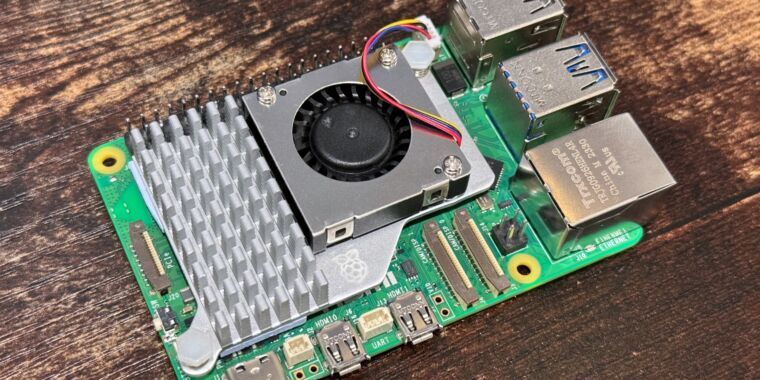The business arm of Raspberry Pi is preparing to make an initial public offering (IPO) in London. CEO Eben Upton tells Ars that should the IPO happen, it will let Raspberry Pi’s not-for-profit side expand by “at least a factor of 2X.” And while it’s “an understandable thing” that Raspberry Pi enthusiasts could be concerned, “while I’m involved in running the thing, I don’t expect people to see any change in how we do things.”



My very honest opinion is that Raspberry Pi’s should be for consumers only. They should not be a product enterprises use. They were originally a cheap and affordable solution to hobbyists needs of getting some minimal amount of compute power in a very limited space. They were not thought up to be bought by the dozens, almost hundreds, for corporations who cram them into a cluster and make a server out of it (I have seen that at my workplace).
Much like there are corporate only products imo there should be consumer only products and Raspberry Pi’s should have very firmly made an effort to stay a consumer only product.
And even in the current situation, yeah they should have prioritized hobbyists. Businesses making themselves reliant on one single irreplaceable part from one single manufacturer in their supply chain have no one to blame but themselves when it comes back to bite them in the ass. That kind of setup is bad business no matter how you look at it and should not exist past a prototype stage unless you’re in the business of gambling.
Sole sourcing of ASICs is a necessity of life unfortunately. They’re rarely pin-for-pin compatible, and hardware doesn’t allow quick spins due to regulatory recertifications any time you touch the PCB.
If your widget needs a computer in a small form factor, you can’t do much better than a pi. Not many firms have expertise of high-speed-design, so off the shelf hardware to handle that portion is pretty much a given. The fact it has exposed and broken out GPIO crowns it really as the only option in the world of SFF PCs. Arduino-class products are microcontrollers, the ATmega328P that powers them is an extremely basic MCU borrowed from industry.
For reference the least expensive industrial pc is $160 on digikey. The other SBCs are from non-reliable brands without certs, volume, etc. Rockchip based designs are going to be a no-go for many due to security implications, however imagined they may be.
These industrial customers may have started off a decade ago as a hobbiest on the pi; their volumes ultimately keep prices down for the hobbiest.
true, if you can’t get a Pi due to corporations sucking the supply dry you will save 100% of the money otherwise spent on a Pi.
Be real, all electronics supply dropped to a trickle. Even if they sent them all into the channel it still would have suffered from the same dipshits scalping.
See the other hot consumer devices: ps5, nvidia 1080/2080s, Nintendo switch (even approaching 7 years old)…
Shit, I couldn’t even get an SD card for a bit.
I don’t think you understand how bad the supply chain problems got. Our vendors struggled to get fab time. When they did get wafers scheduled they had to choose which of their dies to print. When they had dies cut from the wafers, they couldn’t get packing to bond the dies into. And that’s one company. Try to align that to 10s to 100s of suppliers and their portfolios. None of those companies are focusing on their low margin devices, such as what you’d find in consumer facing devices. We had to idle our production for months across multiple product lines because of a single $0.75 chip that doesn’t have an equivalent (see above regarding ASICs). These issues finally subsided by the end of last year and have cemented a bit of patience in me that I did not have before the pandemic.